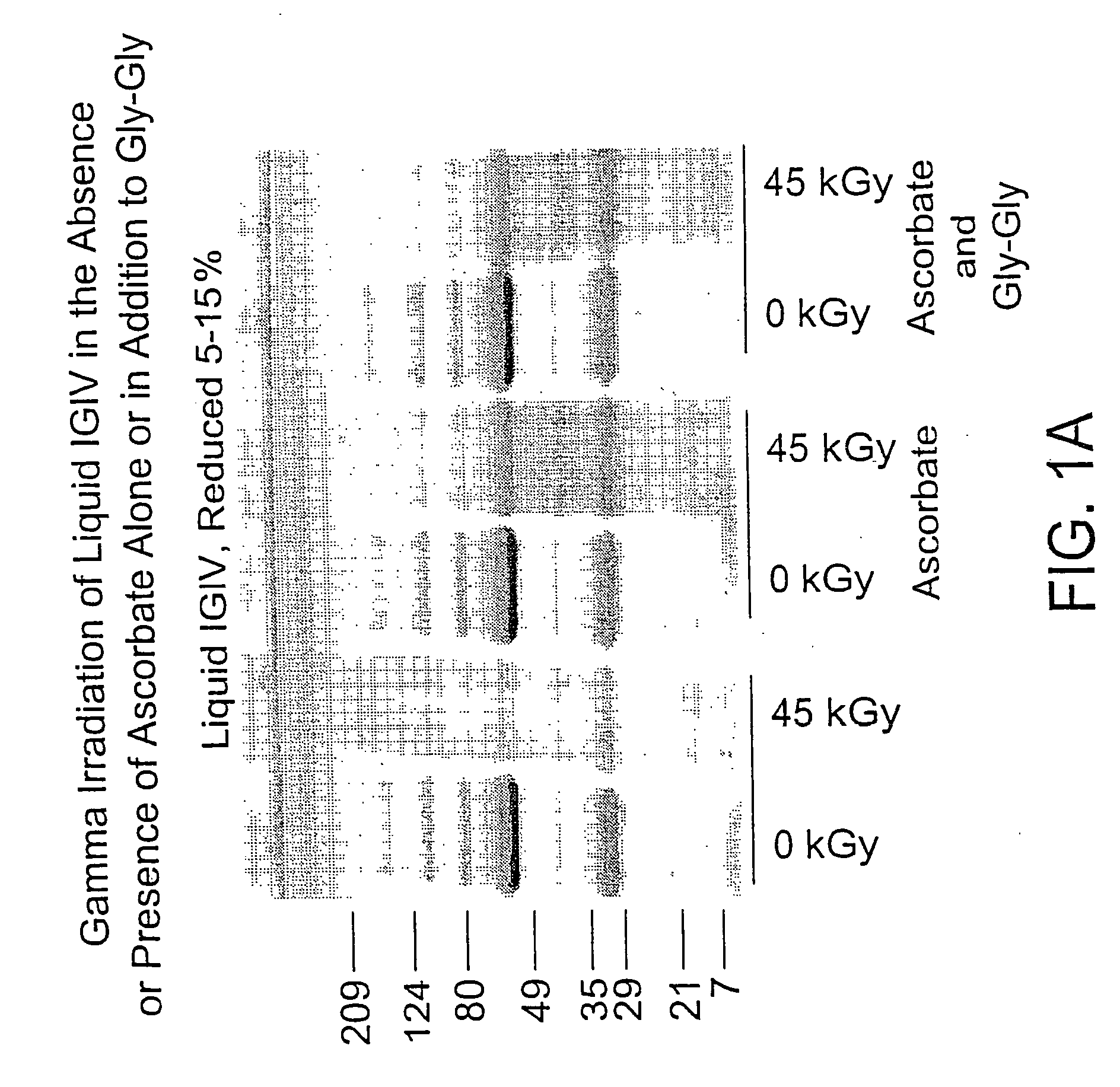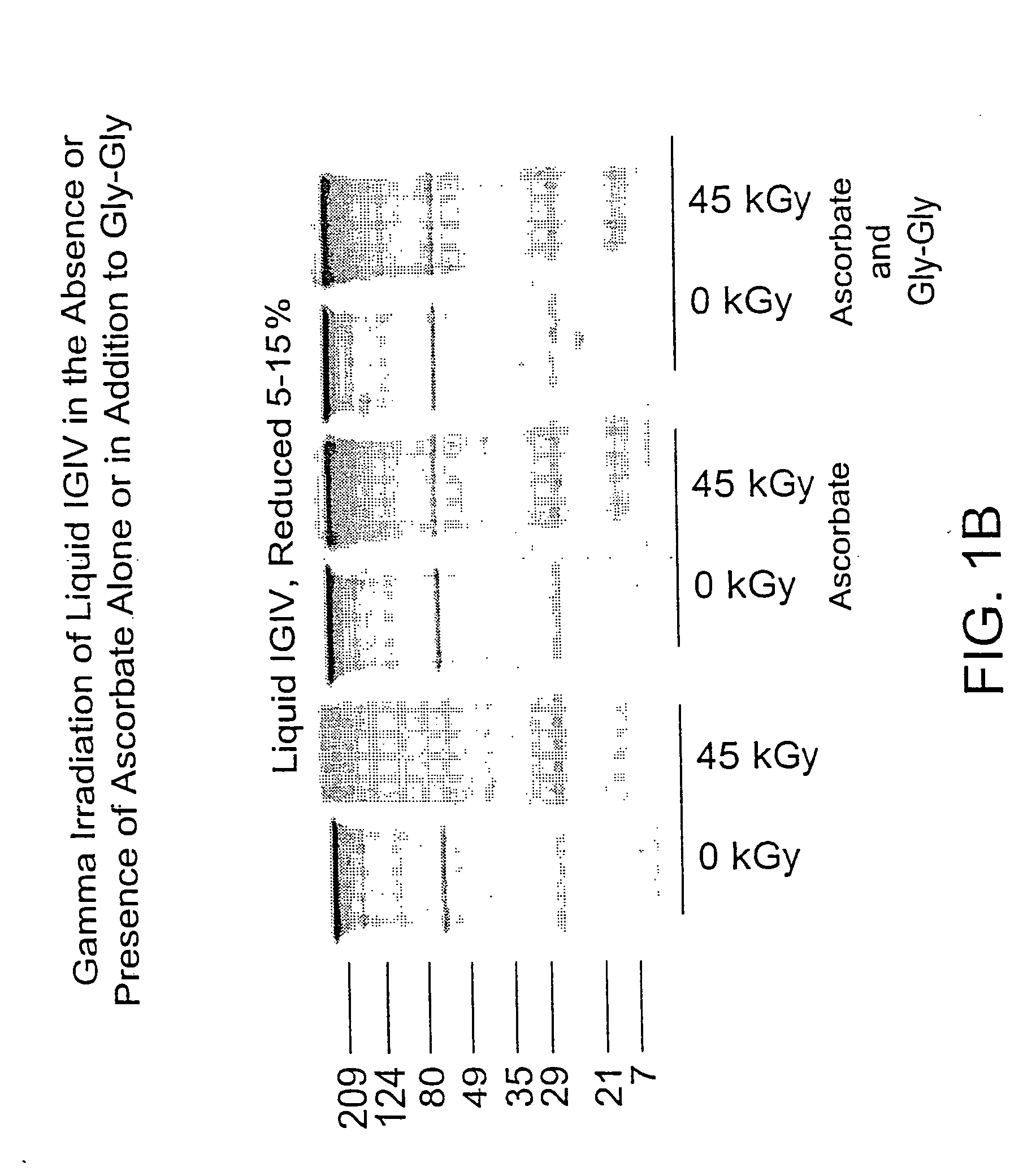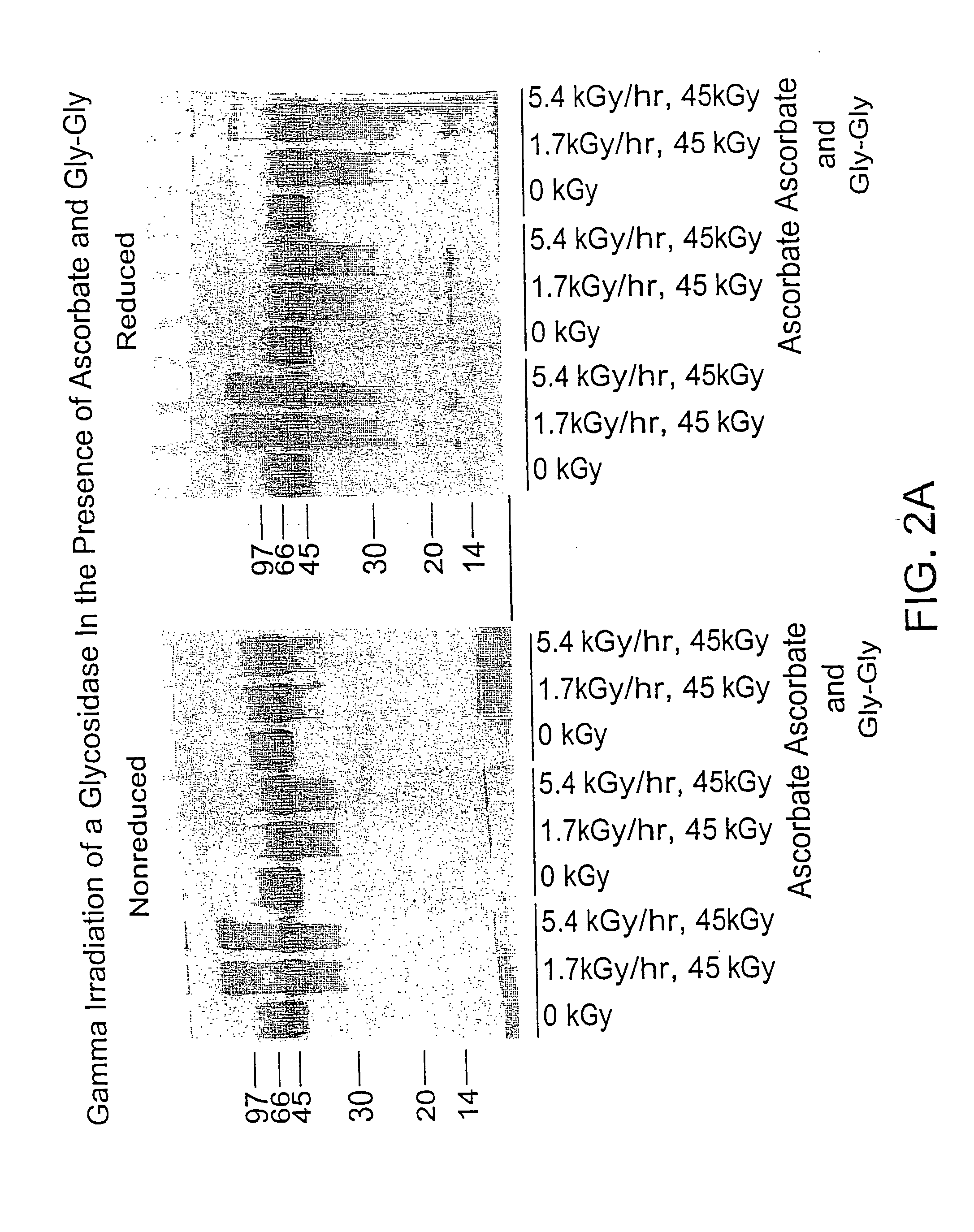Methods of sterilizing biological mixtures using stabilizer mixtures
a technology of biological mixtures and stabilizers, applied in the direction of biocide, plant growth regulators, biochemistry apparatus and processes, etc., can solve the problems of not always reliable, use may contain unwanted and potentially dangerous biological contaminants or pathogens, and is not always reliabl
- Summary
- Abstract
- Description
- Claims
- Application Information
AI Technical Summary
Benefits of technology
Problems solved by technology
Method used
Image
Examples
example 1
[0093] In this experiment, the protective effect of the combination of ascorbate (20 mM), urate (1.5 mM) and trolox (200 FM) on gamma irradiated freeze-dried anti-insulin monoclonal immunoglobulin supplemented with 1% bovine serum albumin (BSA) was evaluated.
Methods
[0094] Samples were freeze-dried for approximately 64 hours, stoppered under vacuum, and sealed with an aluminum, crimped seal. Samples were irradiated at a dose rate of 1.83-1.88 kGy / hr to a total dose of 45.1-46.2 kGy at 4° C.
[0095] Monoclonal immunoglobulin activity was determined by a standard ELISA protocol. Maxisorp plates were coated with human recombinant insulin at 2.5 μg / ml overnight at 4° C. The plate was blocked with 200μl of blocking buffer (PBS, pH 7.4, 2% BSA) for two hours at 37° C., and then washed six times with wash buffer (TBS, pH 7, 0.05% TWEEN 20). Samples were re-suspended in 500 μl of high purity water (100 ng / μl), diluted to 5 μg / ml in a 300 μl U-bottomed plate coated for either overnight or f...
example 2
[0097] In this experiment, the protective effect of the combination of 200 :M Trolox, 1.5 mM urate, and 20 mM ascorbate on freeze-dried anti-insulin monoclonal immunoglobulin supplemented with 1% human serum albumin (HSA) and, optionally, 5% sucrose, irradiated at a high dose rate was evaluated.
Method
[0098] Samples were freeze-dried for approximately 64 hours, stoppered under vacuum, and sealed with an aluminum, crimped seal. Samples were irradiated at a dose rate of approximately 1.85 kGy / hr to a total dose of 45 kGy at 4° C.
[0099] Monoclonal immunoglobulin activity was determined by a standard ELISA protocol. Maxisorp plates were coated with human recombinant insulin at 2.5 μg / ml overnight at 4° C. The plate was blocked with 200 μl of blocking buffer (PBS, pH 7.4, 2% BSA) for two hours at 37° C., and then washed six times with wash buffer (TBS, pH 7, 0.05% TWEEN 20). Samples were re-suspended in 500 μl of high purity water (100 ng / μl), and diluted to 5 μg / ml in a 300 μl U-bott...
example 3
[0102] In this experiment, the protective effect of ascorbate (200 mM), alone or in combination with Gly-Gly (200 mM), on a liquid polyclonal antibody preparation was evaluated.
Method
[0103] In 2 ml glass vials, samples of IGIV (50 mg / ml) were prepared with either no stabilizer or the stabilizer of interest. Samples were irradiated with gamma radiation (45 kGy total dose, dose rate 1.8 kGy / hr, temperature 4° C.) and then assayed for functional activity and structural integrity.
[0104] Functional activity of independent duplicate samples was determined by measuring binding activity for rubella, mumps and CMV using the appropriate commercial enzyme immunoassay (EIA) kit obtained from Sigma, viz., the Rubella IgG EIA kit, the Mumps IgG EIA kit and the CMV IgG EIA kit.
[0105] Structural integrity was determined by gel filtration (elution buffer: 50 mM NaPi, 100 mM NaCl, pH 6.7; flow rate: 1 ml / min; injection volume 50 μl) and SDS-PAGE (pre-cast tris-glycine 4-20% gradient gel from Nov...
PUM
 Login to View More
Login to View More Abstract
Description
Claims
Application Information
 Login to View More
Login to View More - R&D
- Intellectual Property
- Life Sciences
- Materials
- Tech Scout
- Unparalleled Data Quality
- Higher Quality Content
- 60% Fewer Hallucinations
Browse by: Latest US Patents, China's latest patents, Technical Efficacy Thesaurus, Application Domain, Technology Topic, Popular Technical Reports.
© 2025 PatSnap. All rights reserved.Legal|Privacy policy|Modern Slavery Act Transparency Statement|Sitemap|About US| Contact US: help@patsnap.com



